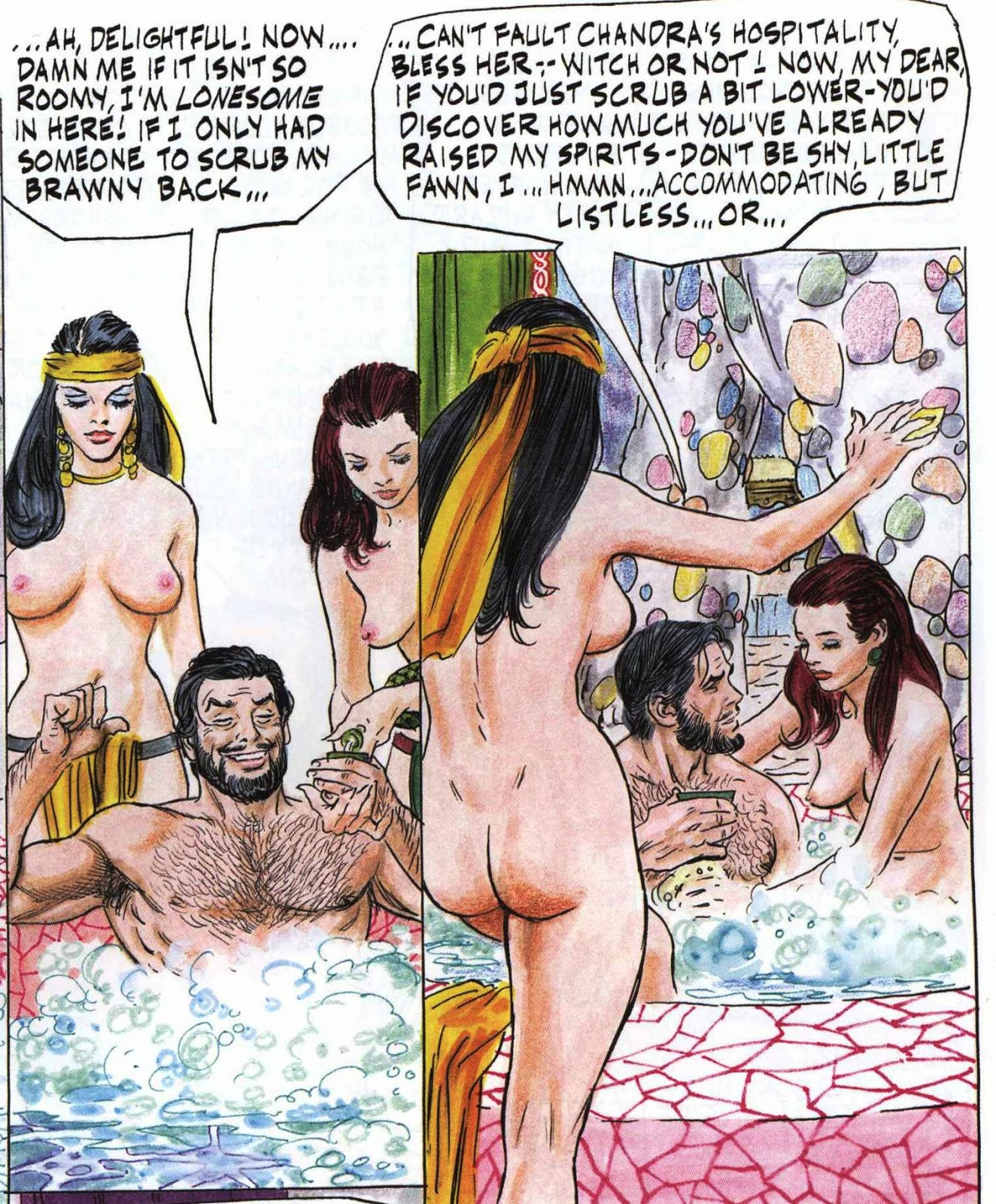'Grey Morrow's Orion' by Grey Morrow
Grey Morrow (March 7, 1934 – November 6, 2001) had a long
and productive career (spanning from the mid-50s to the late 90s) as an artist
for comic books, newspaper strips, television cartoons, magazines, paperback
book covers, and illustrated books.
Starting with the March, 1978 issue and appearing monthly
through to the December, 1978 issue, Heavy Metal magazine published Morrow’s
sword-and-sorcery strip ‘Orion’. This large –size (12 ½ x 9 1/8 inches) trade
paperback compiles all the ‘Orion’ episodes, as well as all three issues of ‘Edge
of Chaos’, a comic book the Morrow did for indie publisher Pacific Comics from July, 1983 to
January, 1984.
The book features a Foreword by Morrow's wife Pocho Morrow, and an Introduction by Daniel Herman that covers Morrow's career.
With 'Orion', Morrow was able to do a creator-controlled comic that enabled him to avoid the restrictions of the Comics Code and the editorial oversight that came with working for companies like Marvel and DC. Needless to say, Morrow took full advantage of the opportunity, filling the pages of Orion with sword fights, monsters, evil wizards, and exposed bosoms, in the best sword-and-sorcery style.....
With Orion, Morrow took pains to avoid mimicking the hero conventions established by mainstream publications like 'Conan', in favor of a hero who was often fallible and fatigued, but not averse to spending time in hedonistic pursuits.
There was also an undercurrent of humor, as well as some degree of pathos, to the adventures of Orion, his homeboy Mamba, the cat-lady Felina, and her orge manservant Urza.
Morrow not only pencilled and inked his artwork for Orion, but hand-colored it as well, a considerable undertaking back in the days before PC-based scanning and coloring of comic book artwork was feasible. While I suspect modern readers used to computer-generated coloration will find this aspect of the artwork to be underwhelming, by the standards of the time, it was quite effective.
For 'Edge of Chaos', apparently the original artwork for the first issue was not available, so scans had to be made of the printed comic; this explains the low-res appearance of that artwork.
The remaining issues 2 and 3 feature much better reproductions.
'Edge' features as lead character Eric Cleese, a hero modeled on Steve Reeves, the actor who portrayed 'Hercules' and other heroes in films in the 50s and 60s.
Cleese is transported from his sloop to Olympus, a futuristic city floating in space, ruled by the fabled Gods of Greek mythology. Cleese is tasked by them to defeat the deranged wizard Moloch, who threatens to destroy their world.
Eric Cleese is in the same mold as Orion, but with a greater sense of self-deprecating humor. His encounters with monsters and demons are marked by a wise-cracking disbelief.
As with Heavy Metal, Pacific Comics eschewed the Comics Code, allowing Morrow to provide his readers with yet another bevy of beautiful, lightly-clad women.
One thing that makes Orion and Edge of Chaos stand out compared to contemporary comics is their realistic displays of anatomy. The grotesquely over-muscled bodies of modern superheroes are absent here, as are the hypersexualized depiction of female bodies that governs their depiction in many superhero titles.
I have mixed feelings about 'Grey Morrow's Orion'. On the one hand it's gratifying to have all of the episodes from Heavy Metal assembled into one volume, in large-scale book with quality stock paper and the best possible reproduction, as deserves a memorable piece of comic art.
However, the decision to have the book published by a small, specialty press means that its cover price of $40 makes it overly expensive, particularly by the standards of the graphic novel market. (I was fortunate to procure a used copy of 'Grey Morrow's Orion' for around $23.)
While it would have required some degree of compromise in size and perhaps paper quality, a smaller-sized edition of 'Orion', akin to the volumes released by the New Comic Company for its 'Creepy Presents' and 'Eerie Presents' hardbound volumes would have been more affordable and expanded the opportunities for Morrow's artwork to reach a wider audience.
















































 The
The 
































